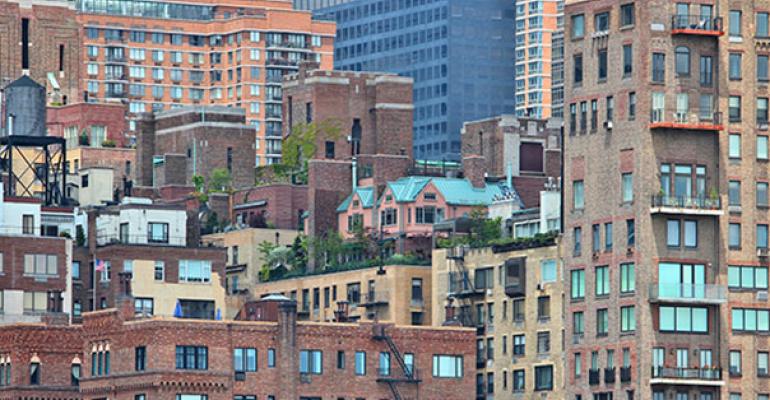Tens of thousands of new apartments are now opening in central business districts (CBDs) around the country. Some will have a hard time finding residents.
"There’s a lot of angst about downtown apartments right now,” says Jay Parsons, vice president for apartment market intelligence firm MPF Research. "The real challenges will come in the next 12-18 months as supply further accelerates in downtown sub-markets across the country.”
The surprising thing about downtown sub-markets is that they continue to be as strong as they are, with developers creating new neighborhoods in CBDs. Many continue to benefit from all the new renters, including Millennials and Baby Boomers, who seem eager to live in the city. Developers continue to pull new permits to build, though it’s not clear how many will start construction.
"Anyone who subscribes to the idea that downtown sub-markets offer a higher barrier to entry is holding onto outdated conventional wisdom,” says Parsons. "It hasn’t been true for a decade."
Building boom downtown
In downtown sub-markets, the number of apartments is growing at a furious rate of 5.0 percent a year, on average. "That’s a huge number—particularly given that downtown areas are, by definition, smaller and more confined areas,” says Parsons. “That means you have new apartments within walking distance of a ton more new apartments.”
That fast growth will probably continue for the next year and a half, through the third quarter of 2017.
The percentage of vacant apartments in downtown sub-markets averaged 6.3 percent in the first quarter, according to data firm Reis Inc. That’s up from 5.6 percent a year ago.
“The vacancy rate for class-A, urban apartments is up a little over the last six months,” says John Sebree director of Marcus & Millichap's national multi housing group. “We’ve heard a little about some concessions being given."
Barriers to development have slowed new construction down, but it hasn’t stopped apartment projects. "Downtown development requires more time and more money, but there has been no shortage of capital sources willing to provide both,” says Parsons.
The outlook for the next year will largely depend on whether these urban economies will be strong enough to attract new renters. “Job growth is what everyone is going to be monitoring,” says Sebree.
In addition, construction lenders might force some discipline among eager developers with big plans and building permits to start construction.
“A substantial percentage will not break ground,” says Sebree. “At least not in the near future.”
That’s because construction lenders have become much more conservative. “Banks are requiring as much as 10.0 percent additional equity and are somewhat reluctant to lend to new borrowers.”
Less supply in suburban areas
In comparison, the number of apartments in the suburbs is growing by less than 2.0 percent a year, and will stay below 2.0 percent for the foreseeable future, according to MPF. “Developers—and the data—continue to tell us that the highest barriers to entry exist in the most desirable, vibrant suburbs,” says Parsons. “Developers are challenged by NIMBY-ism and restrictive zoning."
The percentage of vacant apartments in suburban areas averaged a healthy 4.2 percent in the first quarter, up just slightly from 4.0 percent the year before.
Rent growth is also stronger in suburban areas, particularly for class-A and class-B apartments.
"These spots have produced the best fundamentals over the last eight years and should continue to shine,” says Parsons. The average rents at class-A and class-B apartments in suburban areas are growing much more quickly, at a rate of about 6.0 percent a year.
At the same time, the rents at class-A and class-B apartments in central business districts are growing at an average rate of 4.0 percent a year—significantly faster than the rate of inflation. It’s also the same rent growth now achieved by class-C apartments in suburban areas, according to MPF.
“The numbers certainly aren’t bad,” says Parsons. “Though urban rent growth has slowed well below that of the suburbs.”
Prices for apartment properties in CBDs have risen much more strongly than prices for suburban apartments, which helps explain why developers are eager to build downtown. Prices for downtown properties rose nearly 450.0 percent from 2000 to the end of 2015.
Prices also rose for suburban properties, but not nearly as much. And the more suburban locations resembled a downtown, the more price growth they experienced. Prices rose nearly 300.0 percent for suburban apartments in “highly walkable” areas, close to 250.0 percent in “somewhat walkable” areas and just 200.0 percent in “car-dependent” suburban areas, according to MPF.

